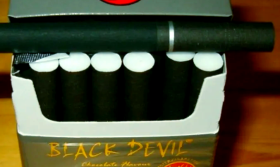Tobacco Reduces Thermal Sensitivity in Chemotherapy-Induced Neuropathy
Introduction
Chemotherapy-induced peripheral neuropathy (CIPN) is a common and debilitating side effect of cancer treatment, characterized by pain, numbness, and altered sensory perception. Among the various sensory deficits, thermal hypoesthesia—reduced sensitivity to temperature—is a significant concern. Emerging evidence suggests that tobacco use may influence neuropathic symptoms, including thermal sensitivity. This article explores the relationship between tobacco consumption and thermal sensitivity in patients with CIPN, examining potential mechanisms and clinical implications.
Chemotherapy-Induced Neuropathy and Thermal Sensitivity
CIPN arises due to neurotoxic effects of chemotherapeutic agents such as platinum compounds, taxanes, and vinca alkaloids. These drugs damage sensory neurons, leading to axonal degeneration, demyelination, and altered ion channel function. Thermal sensitivity is mediated by small-diameter Aδ and C fibers, which are particularly vulnerable to chemotherapy-induced damage.
Patients with CIPN often report:
- Reduced ability to detect hot or cold stimuli
- Paradoxical burning sensations
- Delayed thermal pain responses
Standard assessments, such as quantitative sensory testing (QST), reveal significant deficits in thermal detection thresholds in CIPN patients.
Tobacco and Its Effects on Neuropathy
Tobacco contains nicotine and numerous neurotoxic compounds that affect peripheral nerves. Chronic smoking has been linked to:
- Vasoconstriction and reduced blood flow to nerves
- Oxidative stress and mitochondrial dysfunction
- Altered pain perception via nicotinic acetylcholine receptors (nAChRs)
Studies suggest that smokers exhibit higher pain thresholds but worse neuropathic symptoms compared to non-smokers. The paradoxical effect of tobacco—reducing acute pain while exacerbating chronic neuropathy—remains poorly understood.
Tobacco’s Impact on Thermal Sensitivity in CIPN
1. Nicotine-Induced Analgesia
Nicotine activates α7 and α4β2 nAChRs, modulating pain pathways. In CIPN, nicotine may:
- Temporarily blunt thermal hypersensitivity
- Disrupt normal thermoreceptor signaling
Animal studies show that nicotine administration reduces thermal hyperalgesia in neuropathic models, suggesting a potential acute desensitizing effect.
2. Chronic Smoking and Nerve Damage
Despite short-term analgesic effects, long-term smoking worsens neuropathy by:
- Impairing microvascular function (reducing nerve oxygenation)
- Increasing oxidative stress (accelerating neuronal damage)
- Disrupting Schwann cell repair mechanisms
This may explain why smokers with CIPN report greater overall neuropathy severity despite reduced thermal sensitivity in some cases.

3. Altered Thermal Perception
Tobacco smoke contains carbon monoxide (CO), which binds hemoglobin and reduces oxygen delivery. Hypoxia may:
- Suppress thermal nociceptor activity
- Delay sensory conduction velocities
Additionally, chronic nicotine exposure downregulates TRPV1 receptors, which are critical for heat sensation. This could contribute to thermal hypoesthesia in smokers with CIPN.
Clinical Implications
1. Diagnostic Challenges
Tobacco use may mask thermal deficits in CIPN, leading to underestimation of neuropathy severity. Clinicians should consider smoking history when interpreting QST results.
2. Treatment Considerations
- Smoking cessation may improve nerve repair but could temporarily worsen pain perception due to nicotine withdrawal.
- Nicotine replacement therapy (NRT) might provide short-term relief but risks perpetuating neuropathy progression.
3. Future Research Directions
Further studies should investigate:
- Dose-dependent effects of nicotine on thermal thresholds
- Genetic polymorphisms in nAChRs affecting CIPN susceptibility
- Combination therapies targeting oxidative stress in smokers with CIPN
Conclusion
Tobacco exerts complex effects on thermal sensitivity in chemotherapy-induced neuropathy. While nicotine may attenuate acute thermal hypersensitivity, chronic smoking likely exacerbates long-term nerve damage. Understanding these interactions is crucial for optimizing neuropathy management in cancer survivors. Future research should clarify whether tobacco-induced thermal hypoesthesia reflects neuroprotection or progressive neurodegeneration.
Key Takeaways
- Nicotine may temporarily reduce thermal pain in CIPN.
- Chronic smoking worsens neuropathy via oxidative stress and vascular damage.
- Smoking history should be considered in CIPN assessment.
By elucidating the relationship between tobacco and thermal sensitivity, clinicians can better tailor interventions for patients with chemotherapy-induced neuropathy.










